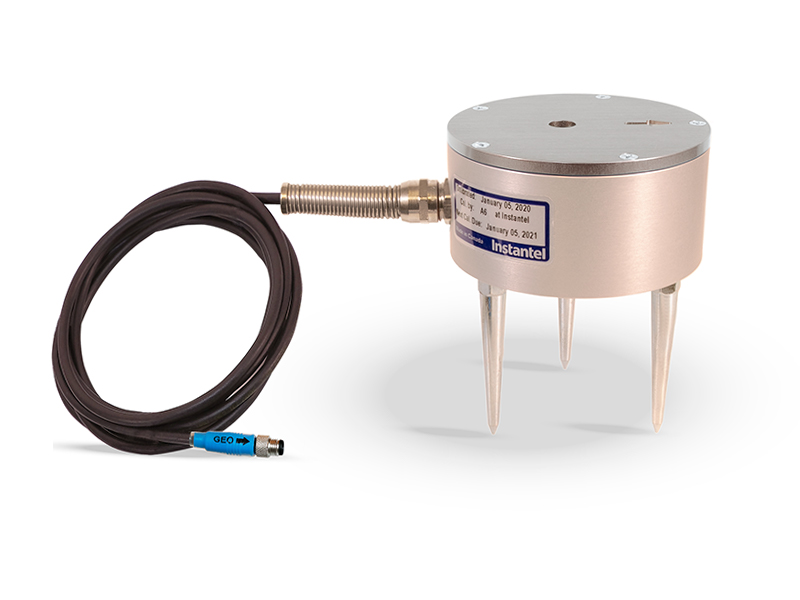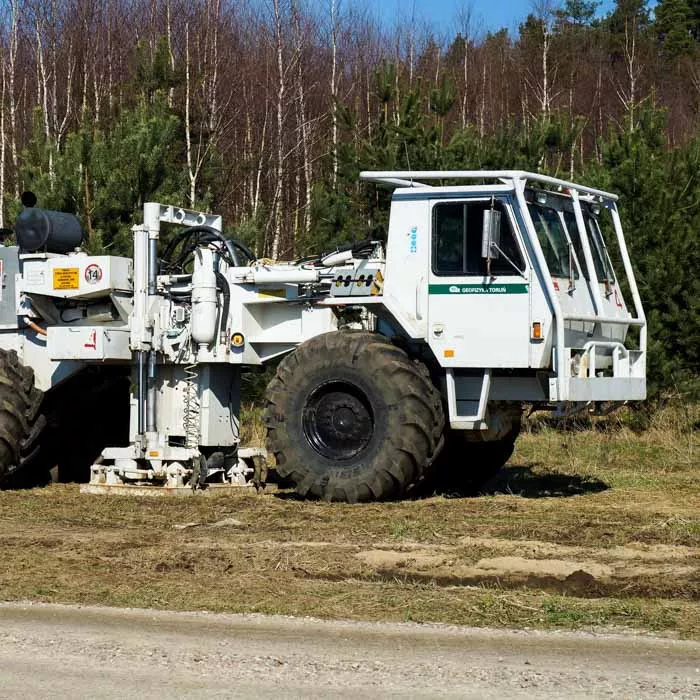Quarries
Quarry activities, such as blasting, can cause vibration and air overpressure which can damage nearby home and structures.
Why Monitor Your Quarry Site?
Quarrying is the process of removing rock from the ground. This rock, or aggregate material, is then used to produce products like asphalt and cement, which is used in home, road building and other applications. Blasting is an integral part of this process and is the first step to removing the rock from the ground. When a blast occurs there are two effects of the blast that can be felt by neighboring home and building owners: vibration and air overpressure. As the explosives detonate, they create a rapid pressure change which creates vibration waves that travel through the ground and compression waves that travel through the air away from the blast. Depending on the size of the blast, the effect of the vibrations and air waves can be felt miles away. Excessive vibrations can crack drywall and damage nearby structures or foundations and air overpressure can rattle and even break windows.
How Instantel Can Help
Using monitoring equipment from Instantel, you can record and monitor vibration, air overpressure and/or noise levels in and around the quarry. Industry guidelines have been developed to provide safe guidelines for vibration and air overpressure produced by blasting activities. The event data recorded with an Instantel monitoring unit can confirm that your blasting activities were within these guidelines. It can also help you design a more productive blast that doesn’t disturb the neighbors.


Regulatory Compliance (Far-Field) Monitoring
While municipal, state and federal laws regulate vibration and air overpressure limits, in most cases it is the responsibility of the quarry to monitor their blasting activities. Regulatory compliance monitoring can also serve as a best practice for quarries when working with the public. Understandably, when a homeowner’s china cabinet rattles, they get concerned that the blasting activity is damaging their property.
The Instantel system combines a monitoring unit with a variety of sensors. Our Micromate monitoring unit has four available channels: three for recording vibration on three planes and one for recording air overpressure or sound/noise levels.
 |
 |
 |
 |
Micromate |
Triaxial Geophone |
Linear Microphone |
Sound Level Microphone |
| Monitoring unit with four available channels: three channels for recording vibration on three planes and one channel for air overpressure or noise data. | Records ground vibration in three planes: transverse, vertical and longitudinal. Available to meet ISEE, DIN and Swedish blasting standards. | Records air overpressure data on a linear scale from 2 to 250 Hz with a range of 100 to 148 dB(L) (2 to 500 Pa). | Class 1 Sound Level Microphone records noise (or sound) levels. The Sound Microphones meets the IEC 61672-1 standards. |
How A Micromate Monitoring System Connects Using THOR and Vision Software Systems
Our equipment is rugged, reliable and designed to withstand long-term installations. The Instantel system can be permanently installed and configured to automatically monitor each day. Using Instantel’s desktop software, THOR, you can remotely program any Instantel monitoring unit connected to a modem. Our easy to use scheduler lets you program the days and time frames you would like to monitor. From your office, you can quickly configure a monitoring unit miles away to start monitoring at 9 AM and stop monitoring at 5 PM. You can then tell it to monitor using those times every day of the week and your unit will automatically begin to monitor based on the scheduled you’ve designed.
THOR

Our proprietary Histogram Combo mode ensures that you never miss an event. With Histogram Combo mode you can monitor a house beside the quarry 24 hours a day and still get reports when vibration or air overpressure levels are exceeded. Your report will show you the peak vibration levels at set intervals throughout the day, but it will also give you a waveform report if there are any exceedances. Using Instantel’s Auto Call Home technology and a modem connected to the monitoring unit, event reports can automatically be sent to your computer so you can analyze the data using THOR. That way any exceedances will be sent as a waveform event after they are recorded and at the end of each day a histogram report will be sent. If a blast has occurred, but there were no exceedances, the monitoring unit may not trigger a waveform event. When you are in Histogram Combo mode, you can use the histogram report to show that even though you were blasting, the vibration and air overpressure levels were not significant enough to trigger the unit.
Vision
Some industry guidelines stipulate that a blast log needs to be maintained. This could include details of the blast, information on the blaster or documentation on where your monitoring equipment is located relative to surrounding structures. Instantel’s cloud-based data hosting solution Vision lets you maintain a record of your blasts on a secure server. Vision can be accessed from phones, tablets, laptops or any internet connected device. Your event data can automatically be sent to Vision and sorted into projects. You can then add project documentation like the blast log to each project. With Vision, you can control how much or how little each person sees. If, for example, you want the regulatory body or quarry administrators to be able to read and download event reports and you want the public to be able to view event reports, you can set those preferences in Vision. Vision is a powerful tool that helps you automatically keep stakeholders informed.


Blast Design (Near-Field) Monitoring
A well-designed blast can reduce the impact on neighboring building and home owners and maximize production. As each hole in a blast design is detonated, the vibrations from each hole will interact with one another. A properly designed blast uses this interaction, adjusting the time delay or the distance between holes and rows. This helps localize the energy and produce a more manageable rock fragmentation so you can avoid drilling or blasting any additional pieces of rock that did not fit in the crusher.
Each hole in a blast pattern produces a vibration wave. By measuring the velocity of the vibrations induced by each hole in the blast, you can calculate the required timing delay between holes or the required distance between holes and rows. Since vibrations diminish as they travel farther away from the blast, you need a geophone that can record vibrations in close proximity to the blast. Instantel’s High Frequency Geophone can measure vibrations from 30 Hz to 1000 Hz so you can be sure to capture all of the necessary vibration frequencies.
The Minimate Pro monitoring unit records the data captured by the High Frequency Geophone. It records up to 65,536 samples per second to give you more resolution in your data. With more resolution, you can diminish uncertainty and distinguish between the blast induced vibrations. Since time delays are a matter of milliseconds, a more accurate velocity measurement increases the accuracy of your distance or time delay calculations.
 |
 |
 |
Minimate Pro4 |
High Frequency Geophone |
Linear Microphone |
| Monitoring unit with four available channels: three channels for recording vibration on three planes and one channel for air overpressure or noise data. | Records high frequency vibrations in three planes: transverse, vertical and longitudinal. | Records air overpressure data on a linear scale from 2 to 250 Hz with a range of 100 to 148 dB(L) (2 to 500 Pa). |
How A Minimate Pro4 Monitoring System Connects Using THOR Advanced and Vision Software Systems

THOR Advance
Using the analysis tools in Instantel’s desktop software THOR, you can post process the recorded event data. THOR lets you place markers on the waveform where each holes goes off, showing the exact velocity at a specific time. With the advanced analysis tools in THOR, you can perform frequency analysis and truncate the waveforms to isolate vibrations produced by each hole. You can also overlay the blast timing patterns over the recorded waveforms as a comparison. This allows you to assess whether the holes in the blast detonated as per your blast design.





